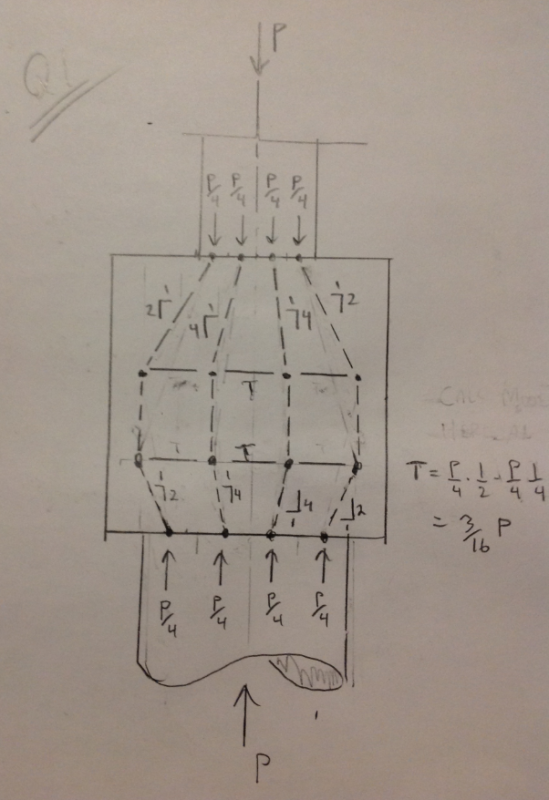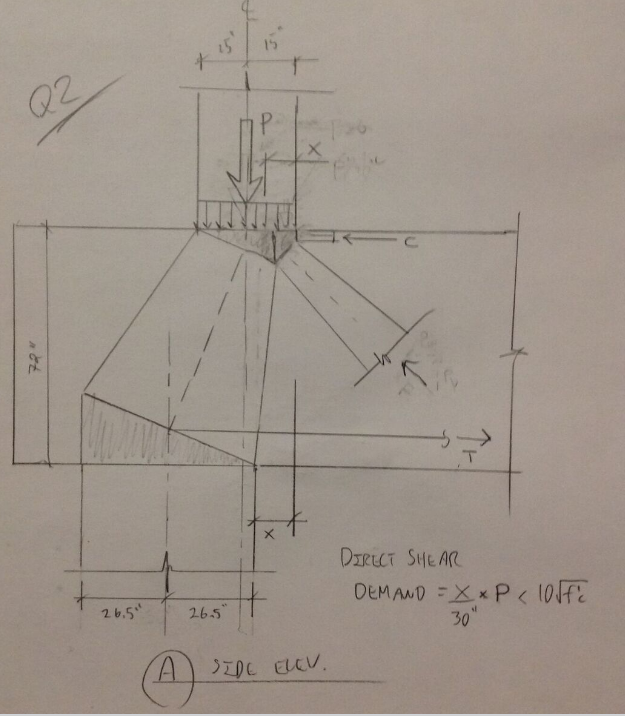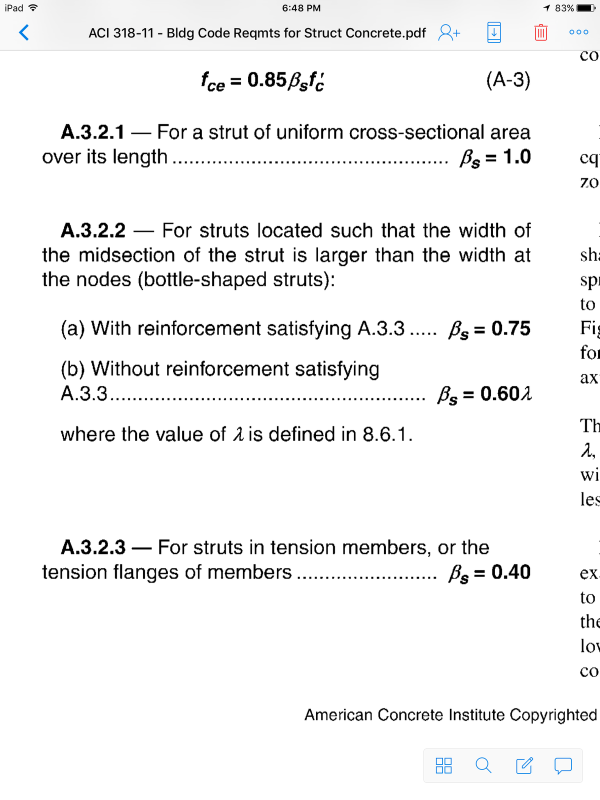I have a couple of questions please.
First I am designing some very heavy transfer beams. The beams are wider than the columns/piers. ACI 318-11 commentary for section A.2.3 in the last paragraph discusses the possible need for reinforcement perpendicular to the beam face thru the nodal zone to prevent splitting of the nodal zone as the load spreads from the column/pier to the width of the transfer beam. It says you "may" need reinforcement which is an odd thing to put in a code in my opinion. My problem is that the quantity of reinforcement required--maybe 20 sq. in.--is prohibitive.
Second ACI 318-11 seems to imply that the member you are designing should be large enough to have less than 10 x sq. rt. f'c shear stress due to the applied load. But what about a condition where you have an applied load whose center is above but near the edge of a drilled pier and all you are doing is moving the applied load to the center of the drilled pier. From this loading there isn't any real shear in the conventional sense. It doesn't make sense to me to increase the depth of the element for a condition that doesn't really exist.
Does anyone have any background or any input about these conditions?
Thanks in advance.
First I am designing some very heavy transfer beams. The beams are wider than the columns/piers. ACI 318-11 commentary for section A.2.3 in the last paragraph discusses the possible need for reinforcement perpendicular to the beam face thru the nodal zone to prevent splitting of the nodal zone as the load spreads from the column/pier to the width of the transfer beam. It says you "may" need reinforcement which is an odd thing to put in a code in my opinion. My problem is that the quantity of reinforcement required--maybe 20 sq. in.--is prohibitive.
Second ACI 318-11 seems to imply that the member you are designing should be large enough to have less than 10 x sq. rt. f'c shear stress due to the applied load. But what about a condition where you have an applied load whose center is above but near the edge of a drilled pier and all you are doing is moving the applied load to the center of the drilled pier. From this loading there isn't any real shear in the conventional sense. It doesn't make sense to me to increase the depth of the element for a condition that doesn't really exist.
Does anyone have any background or any input about these conditions?
Thanks in advance.



